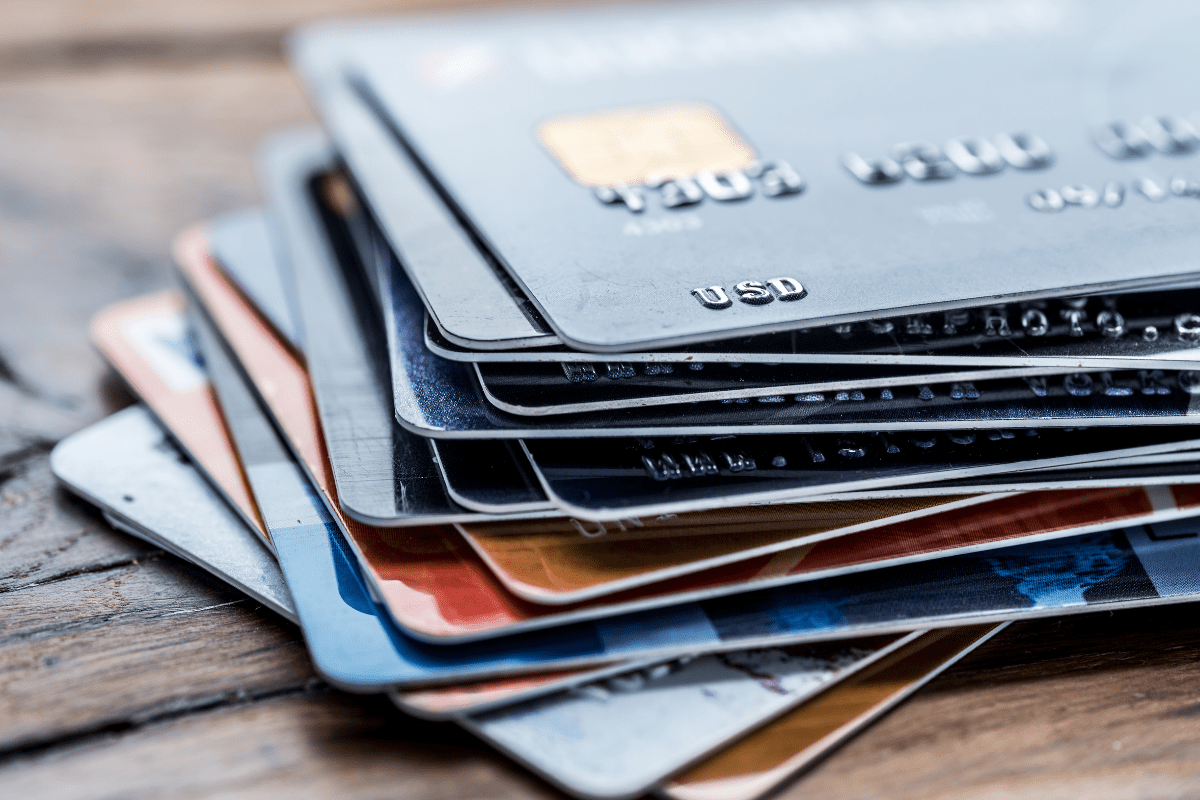Teaching teenagers about credit and debt feels like explaining quantum physics to someone who still thinks money magically appears when you stick a plastic card into a machine. But with 75% of teens lacking confidence in their personal finance knowledge and credit card debt rising among young adults, we can't afford to wait until they're drowning in payments to start the conversation. Here's how to make credit and debt concepts stick without putting everyone to sleep.
Making abstract concepts hit home
The biggest challenge with teaching teens about credit and debt is that the consequences feel abstract and far away. They need to see real numbers, real timelines, and real money leaving their pockets before the lessons click.
The $100 t-shirt reality check
Start with something concrete they can visualize. Take that $100 concert t-shirt (because apparently plain shirts are $15 now and band merch costs more than your car payment). Put it on a credit card with the current average APR of 24% and make minimum payments. That shirt doesn't cost $100…it costs $121 and takes 11 months to pay off.
Show them the actual math, month by month. They need to see how $25 minimum payments barely touch the principal while interest keeps adding up. It's not theoretical when you can point to real numbers on a payment schedule.
Visual timelines that tell the truth
Create a simple chart showing how $1,000 in credit card debt grows over time with minimum payments. The visual impact hits different than just saying "interest is expensive."
Here's what that timeline looks like:
- Year 1: Still owe $850 after paying $300
- Year 2: Still owe $650 after another $300
- Year 3: Still owe $420 after another $300
- Year 4: Finally down to $150 remaining
- Total cost: $1,680 for that original $1,000
Watching those numbers crawl down while the total payments climb up makes the abstract concept very real, very fast.
The future self calculator
This exercise takes five minutes and a basic calculator, which is about their maximum attention span for financial topics anyway. Show them two scenarios with the same $50 monthly amount:
Scenario A: Paying off credit card debt Scenario B: Investing in a simple index fund
After 10 years, Scenario A leaves them with zero dollars and paid-off debt. Scenario B leaves them with approximately $8,000. The difference isn't just the money…it's understanding that every dollar spent on interest payments is a dollar that can't work for their future.
Smart credit card strategies that actually work
The foundation of smart credit card use comes down to one simple rule that eliminates 90% of problems before they start. Everything else is just details.
The cardinal rule: treat credit like cash
Never charge anything you couldn't pay for with cash right now. This single rule prevents most credit card disasters, but it requires a mental shift for teens who live in a world of "buy now, pay later" messages everywhere they look.
Help them build the habit of pausing before every purchase to ask: "Could I pay this off completely right now?" It creates a mental speed bump between impulse and purchase that gets stronger with practice.
Emergency versus convenience spending
Teens need clear categories for what constitutes a real emergency versus convenient spending. Without boundaries, everything feels urgent when you want it badly enough.
Real emergencies might include:
- Car repair needed for work
- Medical expense not covered
- Broken laptop required for school
- Emergency family travel
Not emergencies:
- New clothes because current ones boring
- Concert tickets for favorite artist
- Eating out because cooking hard
- Phone upgrade because new model cool
The gray areas require family discussion, but having clear categories helps them pause before swiping.
Practical payment strategies
Set them up for success with systems that don't require perfect memory or superhuman discipline:
- Autopay for full balance monthly
- Weekly spending check-ins every Sunday
- Calendar reminders before due dates
- Simple spending tracking apps
The goal isn't obsessive money monitoring…it's building awareness habits that prevent nasty surprises when the bill arrives.
Credit scores decoded for real life
Credit scores feel like mysterious adult numbers until you show teens how they directly impact real expenses they'll face soon. Make it concrete by connecting the dots to things they actually care about.
Credit score simulation walkthrough
Start them at zero credit history (technically impossible, but useful for teaching). Walk through each action and show the score changes:
First credit card opened brings them to around 650-670. Six months of on-time payments bumps it up another 20-30 points. One missed payment drops it 60-100 points. Maxing out the credit limit drops it another 50+ points.
The key insight: building good credit takes months of consistent behavior, but destroying it can happen in one careless month.
Real world impact scenarios
Abstract credit scores become real when you show actual costs. A teen with a 750 credit score getting their first car loan might qualify for 6% interest. The same teen with a 620 score might pay 12% interest.
On a $15,000 car loan over five years, that's the difference between paying $1,200 in interest versus $4,200. That's literally $3,000 more for the exact same car because of credit score differences.
Suddenly, making credit card payments on time doesn't seem like such a hassle when you frame it as saving thousands on future purchases.
Understanding credit reports
Pull up a sample credit report from annualcreditreport.com and walk through it like reading a map. Most teens have never seen one, so this demystifies what feels like secret adult paperwork.
Show them how long accounts stay on their report, what different account types mean, and how to spot errors. Yes, errors happen frequently, and catching them early matters.
The financial reality teens face today
The numbers paint a sobering picture of what happens when financial education comes too late. Understanding the scope of the problem helps frame why these conversations matter so much.
Young adults are struggling with debt at alarming rates. One in five people between ages 18-24 already have debt in collections. Credit card delinquencies among 18-29 year olds are surpassing pre-pandemic levels, and the average credit card now charges over 21% interest, with new cards averaging 24.35%.
But here's what might surprise you: this generation actually wants to learn about money. They're asking questions, seeking information, and many genuinely want to avoid the financial mistakes they've seen others make. The challenge isn't getting them interested…it's making the lessons stick.
Debt avoidance techniques that work
Building good money habits starts with understanding where money goes and why. Most teens have no clear picture of how quickly small purchases add up, partly because they're not paying rent or utilities yet.
Budget building for real teen life
Forget traditional budgeting advice designed for adults with mortgages. Teen budgets need to account for irregular income from part-time jobs and expenses that adults don't have.
A realistic framework might look like 50% for needs (gas, phone, school supplies), 30% for wants (entertainment, eating out), and 20% for savings (emergency fund, big purchases). But make it specific to their actual life, not some theoretical scenario.
Sinking funds for big purchases
Teach them to save backwards from major expenses. Prom costs $800? Start saving $67 monthly a year ahead. Want a $1,200 laptop for college? That's $100 monthly for a year.
This concept feels revolutionary to teens used to either asking parents for money or putting things on credit. But once they experience buying something significant with money they've saved specifically for that purpose, they understand the satisfaction difference.
Learning from real scenarios
Case studies make abstract concepts concrete and help teens see how financial decisions play out over time.
The back to school shopping disaster
Meet "Emma," a responsible high school senior who gets her first credit card over the summer. She works part-time, and her parents trust her judgment. Then back-to-school shopping happens.
New school year means new clothes, supplies for AP classes, and probably a laptop upgrade. Emma charges $800 across multiple shopping trips, figuring she'll pay it off quickly with job money.
Reality check: Emma makes about $400 monthly at her part-time job. After gas, phone bill, and fun money, she can realistically put $100 monthly toward the credit card. At 24% APR, paying off that $800 takes 9 months and costs an extra $89 in interest.
Then life happens. Emma's car needs new tires costing $300. She's already maxed out her payment capacity, so the tires go on the credit card too. Now she owes $1,100, her minimum payment increases, and she's officially in over her head.
Emergency response planning
What should Emma have done when the tire emergency hit? Walking through alternatives teaches problem-solving skills:
- Ask family for help (swallow pride, save money)
- Look for used tires (not ideal, but functional)
- Pick up extra work shifts (earn money first)
- Use emergency savings (if it exists)
- Credit card as last resort (with specific payoff plan)
Most teens default to the credit card because they don't know other options exist or feel too embarrassed to ask for help.
Common pitfalls and prevention
Understanding the most frequent mistakes helps teens recognize danger signs before they become problems.
The "it's only $20 monthly" trap
Subscription services and payment plans train teens to think in monthly payments rather than total costs. That $20 monthly for something adds up to $240 yearly, but it doesn't feel expensive when broken down.
Help them calculate total costs for everything. Streaming services at $15 monthly equal $180 yearly. Phone upgrade plans at $30 monthly equal $720 over two years. Credit card minimums at $25 monthly might take years to pay off and cost hundreds in interest.
Store credit card seduction
The cashier offering 20% off today's purchase for opening a store credit card seems like free money. But store cards typically have higher interest rates (often 25-30%) and lower credit limits, making them easier to max out.
Teach the math: that 20% discount disappears fast if they carry any balance. Plus, applying for multiple credit cards in a short time damages their credit score.
Buy now, pay later risks
BNPL services like Klarna and Afterpay market themselves as safer alternatives to credit cards. They're not. One in five users miss payments, often because they forget about automatic deductions or don't have enough money in their account.
Multiple BNPL payments due on different dates creates a juggling act that's easy to mess up. Missed payments can hurt credit scores just like missed credit card payments.
Tools and resources that teens will actually use
The best financial tool is whichever one they'll consistently use, even if it's not the most sophisticated option available.
Apps and tools worth recommending
Skip complicated budgeting software designed for adults managing mortgages and retirement accounts. Teens need simple tools that connect to their existing habits:
- Mint or YNAB for expense tracking
- Credit Karma for score monitoring
- Banking apps with spending breakdowns
- Simple spreadsheet templates for budgeting
For accessing credit reports, stick with the official free annual reports rather than services that might upsell them later.
Family discussion strategies
Money conversations shouldn't happen only during crisis moments. Regular family discussions normalize talking about finances and create learning opportunities:
Monthly money check-ins asking what they spent money on and any surprises. Goal-setting sessions about what they're saving for and how it's going. Mistake processing discussions about what went wrong and what they'd do differently next time.
The goal is making money discussions as normal as talking about school or friends.
Age appropriate progression
Financial education isn't one-size-fits-all. A 13-year-old needs different information than an 18-year-old applying for college credit cards.
Ages 13-15 need foundation building: basic spending tracking, simple savings goals, understanding how interest works, and distinguishing needs from wants.
Ages 16-17 need real-world preparation: managing their first checking account, budgeting part-time job income, understanding car expenses, and planning for college costs.
Ages 18+ need independence skills: building credit responsibly, monitoring credit reports, making student loan decisions if college is the plan, and understanding rental requirements.
When things go wrong
Despite best intentions and solid education, some teens will make financial mistakes. The key is catching problems early and teaching recovery skills rather than just fixing things for them.
Watch for warning signs like being secretive about spending, stress about money without discussing specifics, consistently making only minimum payments, or frequently borrowing money from friends or family.
When problems arise, approach conversations with curiosity rather than judgment. "Help me understand what happened" works better than "How could you be so irresponsible?" Create a safe space for admitting mistakes. Teens who feel judged will hide problems until they become much worse.
Sometimes problems require outside help. Credit counseling services, many of them free, can provide objective guidance when family emotions run high. Teaching teens that asking for professional help shows wisdom, not weakness, serves them well throughout life.
Building habits that last
The ultimate goal isn't perfect financial behavior…it's developing good instincts and recovery skills. Teens who learn to pause before purchases, understand true costs, and communicate about money problems are better equipped for adult financial life than teens who never make mistakes because parents controlled everything.
Start conversations early, keep them practical and specific, and remember that financial literacy develops over time. Your teen won't become a money expert overnight, but they can learn to make thoughtful decisions that serve their future selves well.
Most importantly, model the behavior you want to see. Teens learn more from watching how you handle money stress, make spending decisions, and talk about financial goals than from any lecture about compound interest. Be honest about your own financial journey, including mistakes and what you learned from them.
Financial education works best when it feels like real-life preparation rather than academic theory. Keep it practical, keep it relevant, and keep the conversations going.





